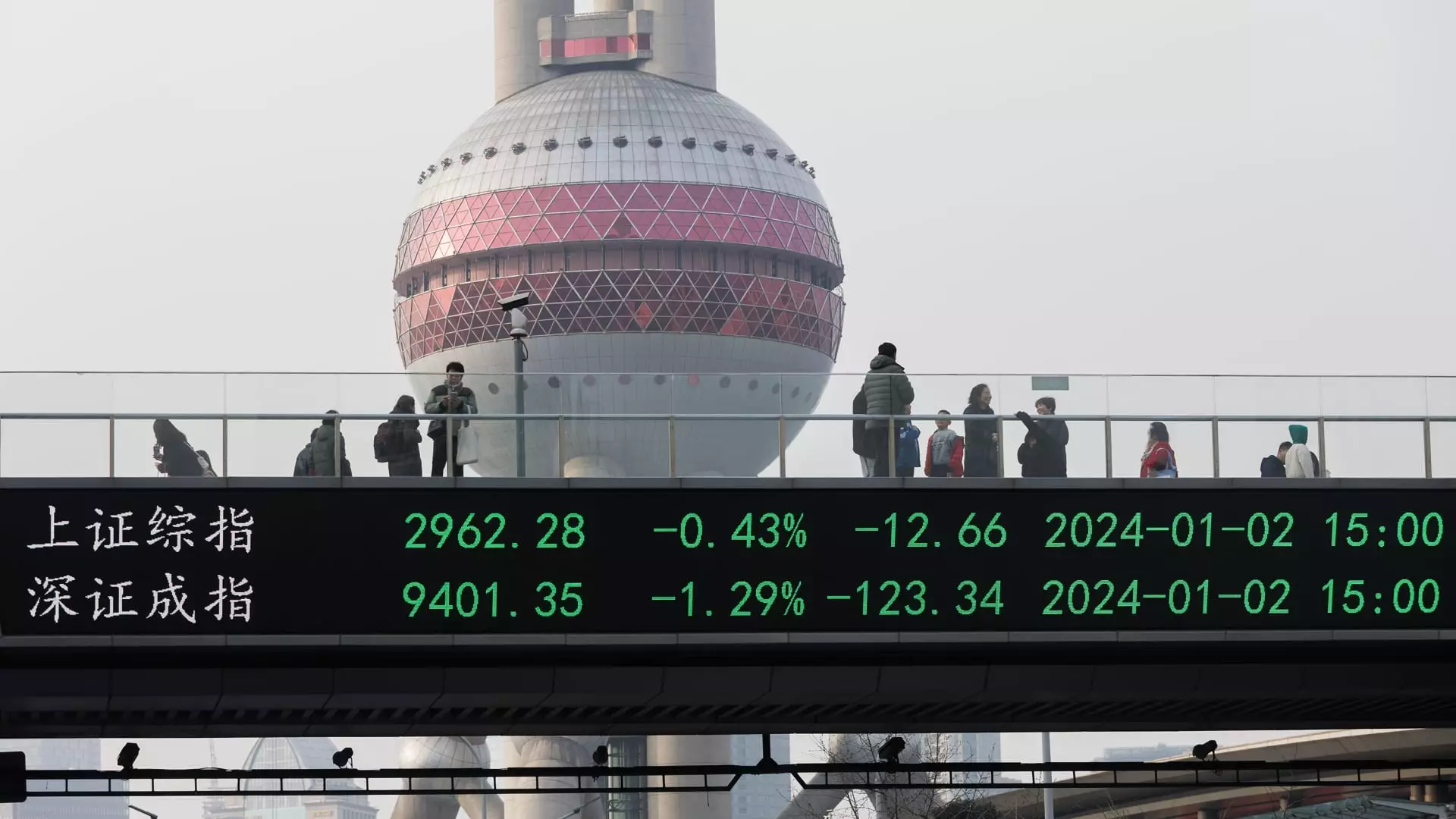In recent days, exchange-traded funds (ETFs) targeting Chinese stocks have experienced a significant uptick in value, reflecting a wave of optimism fueled by extensive government stimulus initiatives. Despite the closure of mainland Chinese markets for a week-long holiday, foreign investors demonstrated renewed interest in Chinese equities, evidenced by the robust performance of several ETFs in the United States. Prominent funds such as the KraneShares CSI China Internet ETF (KWEB), iShares China Large-Cap ETF (FXI), and Invesco Golden Dragon China ETF (PGJ) saw price increases of at least 5% during morning trading on Wednesday.
The current rally comes as a remarkable turnaround for these financial instruments, which primarily invest in stocks listed on the Hong Kong Stock Exchange or companies with Hong Kong and U.S. listings that are primarily engaged in operations within China. Market analysts suggest that the influx of capital into these ETFs is a direct reaction to the Chinese government’s decisive actions to combat a flagging economy and restore investor confidence.
For years, Chinese equities faced headwinds stemming from rigorous regulatory crackdowns and a generally sluggish economic climate. However, the recent easing of regulatory constraints, coupled with substantial monetary stimulus measures, has reignited investor enthusiasm. Goldman Sachs’ tactical specialist Scott Rubner noted an unprecedented surge in daily demand for Chinese equities, asserting that current market conditions differ from past scenarios. He confidently remarked that the markets have yet to return to benchmark index weights, indicating a potential for further growth.
David Tepper, a well-known figure in hedge fund management, expressed his bullish stance regarding Chinese markets during a recent CNBC appearance. He illustrated his conviction by stating that he was willing to acquire a wide range of Chinese investments, underscoring the optimism surrounding government support in revitalizing the economy. Tepper’s approach reflects a broader sentiment among investors who are keen to capitalize on the apparent economic rebound.
Intriguingly, the individual stocks within these ETFs have also flourished as part of this rally. For instance, JD.com saw an impressive 5% increase, marking its fifth consecutive day of gains. Similarly, Pinduoduo (PDD) posted a robust 4.8% rise after an 8% surge the previous day. These notable performances not only exemplify the rally’s intensity but also highlight investor confidence in the potential for enduring recovery in the Chinese digital economy.
The trajectory of ETFs and their underlying assets during this period raises essential questions and considerations for investors. How sustainable is this rally? Will the government’s interventions have lasting effects, or are they merely short-lived responses to economic pressures? As traders and investors navigate this shifting landscape, the interplay between regulatory frameworks, government policy, and market dynamics will undoubtedly shape the future of Chinese equities.
The current surge in Chinese stocks, highlighted by the performance of U.S.-listed ETFs, signals a potential turning point for investors who had long been cautious about engaging with the Chinese market. As the holiday period concludes and mainland markets reopen, many will be watching closely to see if this momentum can be sustained and expanded.

